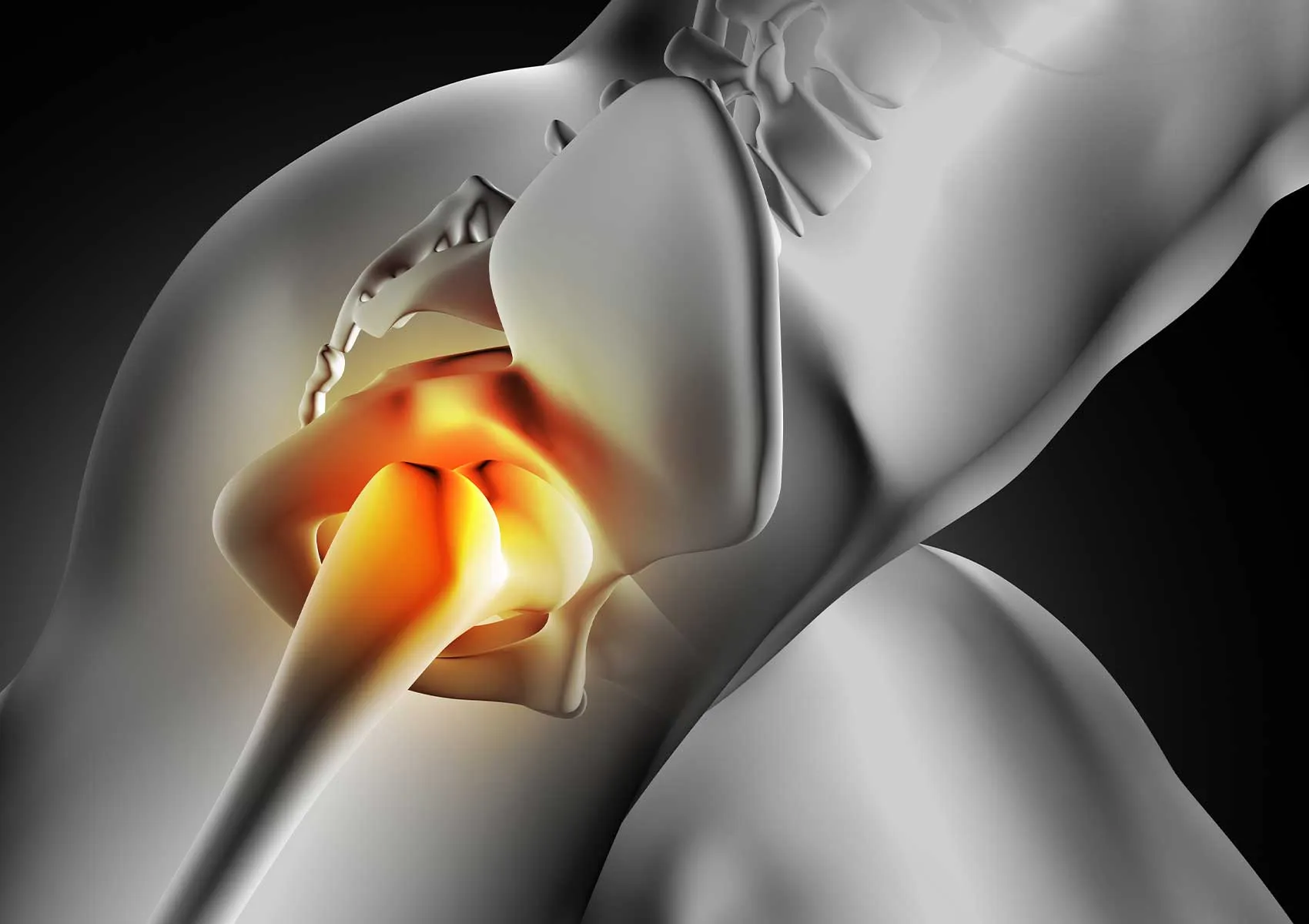Iliopsoas Tendinitis in the Hip: Causes and Treatment
A Subtle Yet Disruptive Cause of Anterior Hip Pain
Iliopsoas tendinitis is an inflammatory condition affecting the iliopsoas tendon—the powerful structure that connects the iliopsoas muscle group to the femur. It is commonly seen in athletes, physically active individuals, and patients with hip muscle imbalances or poor movement mechanics. Pain typically starts in the front of the hip or groin, worsens with activities like stair climbing or lifting the knee, and can significantly impact daily function.
In this article, we explore the anatomy of the iliopsoas tendon, how tendinitis develops, its clinical symptoms, and both conservative and advanced treatment options, all supported by up-to-date clinical knowledge.
Anatomy of the Iliopsoas Tendon
The iliopsoas muscle is a combination of two muscles: the iliacus and psoas major. These muscles originate from the lumbar spine and pelvic bone and merge to insert onto the lesser trochanter of the femur via a common tendon. The iliopsoas is the primary hip flexor, meaning it helps lift the leg and flex the hip during walking, running, and stair climbing.
Due to frequent use and close proximity to bone, repetitive friction at the tendon’s insertion point can lead to inflammation and microtrauma, resulting in what we call iliopsoas tendinitis.
What Causes Iliopsoas Tendinitis?
Iliopsoas tendinitis typically arises from overuse or mechanical irritation of the tendon. Repetitive hip flexion activities or tightness in the muscle-tendon unit can cause irritation, inflammation, and eventually pain.
Common risk factors and causes include:
- Long-distance running, stair use, or repeated leg lifting
- High-flexion sports like dance, gymnastics, soccer, or martial arts
- Hip muscle imbalances or weakness
- Excessive lumbar lordosis (increased curvature of the lower back)
- Post-operative strain after hip arthroscopy
- Structural conditions like femoroacetabular impingement (FAI)
- Improper training or exercise technique
This condition is particularly common in female athletes due to differences in pelvic anatomy and biomechanics.
What Are the Symptoms?
The most prominent symptom of iliopsoas tendinitis is sharp or aching pain in the front of the hip or groin. It often develops gradually and may mimic other hip or groin pathologies.
Typical symptoms include:
- Pain during walking, running, or climbing stairs
- Sharp pain with active hip flexion (e.g., lifting the leg while standing)
- Discomfort after prolonged sitting or when standing from a seated position
- Stiffness or tightness during hip extension
- Snapping or clicking sensation in the hip (may coexist with snapping hip syndrome)
- Local tenderness over the iliopsoas tendon
How Is It Diagnosed?
Diagnosis is primarily clinical. During physical examination, tests like the Thomas test or resisted hip flexion can reproduce symptoms. Palpation of the iliopsoas tendon may reveal tenderness.
Imaging methods can help confirm the diagnosis or rule out other conditions:
- Ultrasound: Useful for detecting fluid, tendon thickening, or bursitis
- MRI: Shows inflammation or edema around the iliopsoas tendon
- Dynamic imaging (MRI or ultrasound): Can detect movement-related issues or snapping
Lab tests are not typically required unless an infection or systemic inflammatory condition is suspected.
How Is It Treated?
Most cases of iliopsoas tendinitis respond well to non-surgical treatment. A tailored, multidisciplinary approach is essential for full recovery.
1. Activity Modification
Temporarily reduce or avoid activities that worsen symptoms, particularly repetitive hip flexion exercises.
2. Medications
Non-steroidal anti-inflammatory drugs (NSAIDs) can help reduce pain and inflammation in the acute phase.
3. Physical Therapy and Rehabilitation
- Stretching of the iliopsoas and surrounding hip muscles
- Strengthening of core, gluteal, and stabilizing muscles
- Manual therapy and deep tissue massage
- Postural correction and movement retraining
- Modalities such as TENS or ultrasound therapy
4. Injections
In refractory cases, an ultrasound-guided corticosteroid injection into the iliopsoas tendon or associated bursa can provide targeted relief.
5. PRP or Stem Cell Therapy
In chronic or recurrent tendinitis, regenerative treatments such as Platelet-Rich Plasma (PRP) or stem cell injections may be considered to support tissue healing.
6. Surgical Intervention
Rarely needed, but in persistent cases unresponsive to conservative measures, arthroscopic iliopsoas tendon release (tenotomy) may be performed.
FAQ
-
Does iliopsoas tendinitis prevent exercise?
During the painful phase, certain activities should be avoided. With proper rehab, a gradual return to sport is possible.
-
How long does it take to recover?
Most patients improve within 4–8 weeks with conservative care.
-
Is PRP effective for iliopsoas tendinitis?
PRP may help in chronic cases, particularly when inflammation persists despite therapy.
-
Will I need surgery?
Surgery is rarely required. It’s only considered if pain continues despite months of non-surgical treatment.
-
Is physical therapy necessary?
Yes. Structured physiotherapy is crucial for resolving pain and preventing recurrence.

